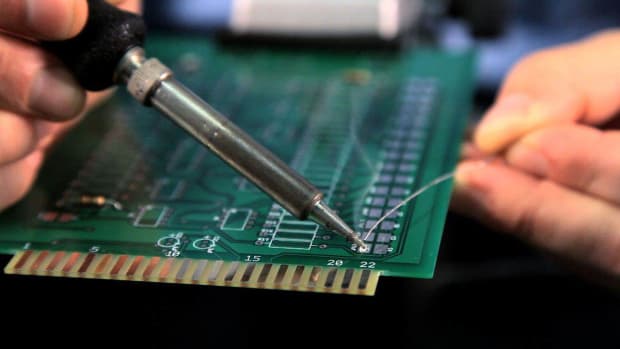About us
FASTPCBA Co.,Ltd
-
 Building 1, Senyang Electronic Technology Park, Guangming High-tech Park, Yutang Street, Guangming District, Shenzhen City.
Building 1, Senyang Electronic Technology Park, Guangming High-tech Park, Yutang Street, Guangming District, Shenzhen City.
-
 F:86-13418481618
F:86-13418481618
-
 pcba13@fastpcba.cn
pcba13@fastpcba.cn
 date:2020-11-09 16:28:26
date:2020-11-09 16:28:26
1. Surface tension of PCBA board
The cohesion of tin-lead solder is even greater than that of water, making the solder spheres to minimize its surface area (under the same volume, the sphere has the smallest surface area compared to other geometric shapes to meet the needs of the lowest energy state) . The effect of the flux is similar to that of the cleaner on the grease-coated metal plate. In addition, the surface tension is highly dependent on the cleanliness and temperature of the surface. Only when the adhesion energy is much greater than the surface energy (cohesion) can ideal adhesion occur. tin.

2. Production of PCBA board metal alloy co-compound
The intermetallic bond between copper and tin forms crystal grains. The shape and size of the crystal grains depend on the duration and strength of the temperature during welding. Less heat during welding can form a fine crystalline structure, forming an excellent welding point with the best strength. SMD processing reaction time is too long, whether it is due to too long welding time or too high temperature or both, it will lead to rough crystalline structure, which is gritty and brittle, with low shear strength .
3. PCBA board dip tin corner
When the eutectic point temperature of solder is about 35°C higher, when a drop of solder is placed on a hot flux-coated surface, a meniscus is formed. To a certain extent, the ability of the metal surface to wet tin It can be evaluated by the shape of the meniscus. If the solder meniscus has a distinct undercut edge, shaped like a drop of water on a greased metal plate, or even tends to be spherical, the metal is not solderable. Only the meniscus stretches to a size less than 30. It has good weldability at a small angle.
4. PCBA board dip tin effect
When the hot liquid solder dissolves and penetrates the surface of the metal to be soldered, it is called metal dip tin or metal dip tin. The molecules of the mixture of solder and copper form a new alloy partly made of copper and partly soldered. This solvent action is called tin dip, which forms an intermolecular bond between each part to form a metal alloy eutectic. The formation of good intermolecular bonds is the core of the welding process, which determines the strength and quality of the welding joint. Only the surface of copper is not polluted, and there is no oxide film formed by exposure to the air to be wetted with tin, and the solder and working surface need to reach an appropriate temperature.
5. The PCBA board uses copper as the metal substrate and tin-lead as the solder alloy. Lead and copper will not form any metal alloys. However, tin can penetrate into the copper, and the intermolecular bond between tin and copper is between the solder and the metal. Metal alloy alloys Cu3Sn and Cu6Sn5 are formed on the connecting surface.
The metal alloy layer (n phase + ε phase) must be very thin. In laser welding, the thickness of the metal alloy layer is on the order of 0.1mm. In wave soldering and manual soldering of PCBA boards, the thickness of the intermetallic bond in good solder joints is mostly more than 0.5 μm. Since the shear strength of the solder joint decreases with the increase of the thickness of the metal alloy layer, it is often tried to keep the thickness of the metal alloy layer below 1 μm, which can be achieved by making the welding time as short as possible.
 Building 1, Senyang Electronic Technology Park, Guangming High-tech Park, Yutang Street, Guangming District, Shenzhen City.
Building 1, Senyang Electronic Technology Park, Guangming High-tech Park, Yutang Street, Guangming District, Shenzhen City.
 F:86-13418481618
F:86-13418481618
 pcba13@fastpcba.cn
pcba13@fastpcba.cn